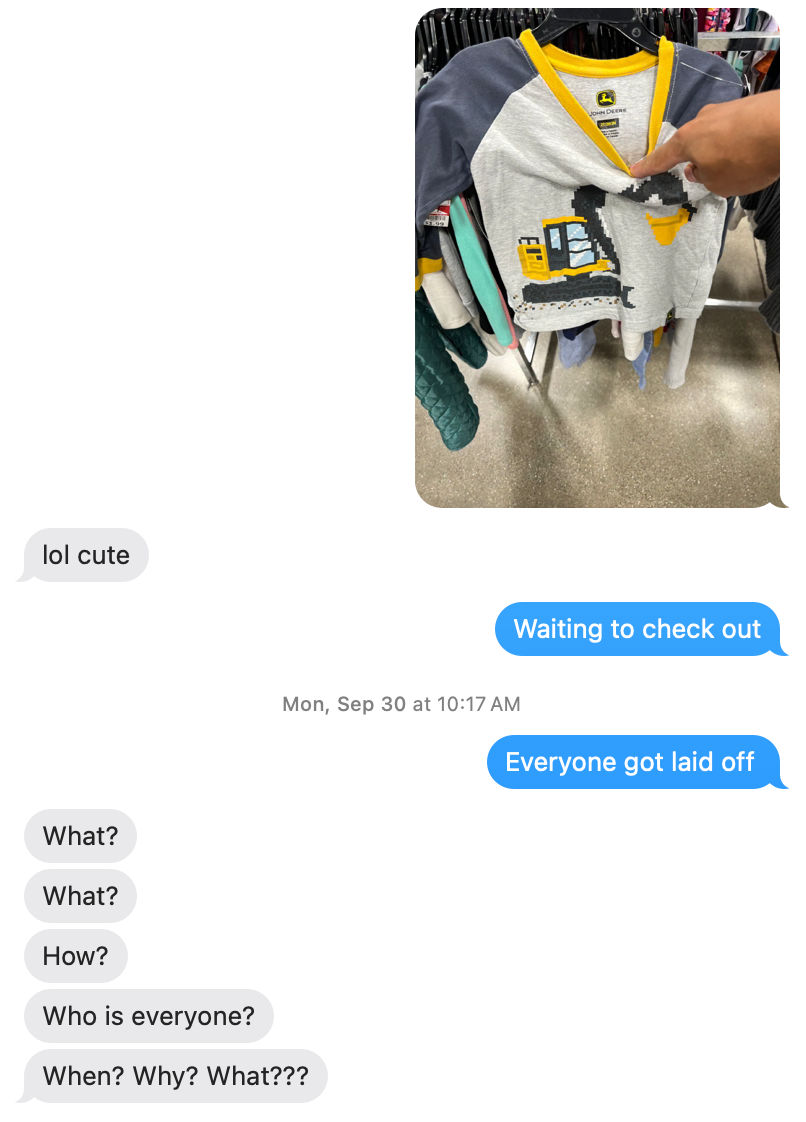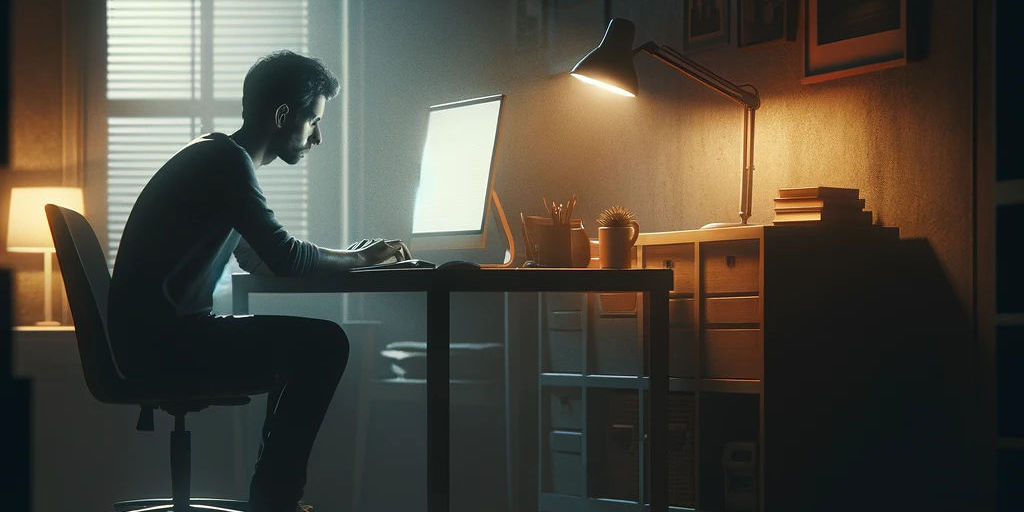Table of contents
Open Table of contents
Being the sole financial provider
It’s not easy, but it is the unfortunate case for a lot of households that there is only one financial provider. Oddly, this becomes more likely when couples have a kid: expenses go up and one parent chooses to be the stay-at-home parent because the cost of day care equals their salary or is so close that the benefits of being present for your child outweighs the financial benefit of continuing to work.
This is the case in my family. When we had our son in early 2023 my wife and I were both working from home most days of the week. We tried very hard to continue working as our son was learning the basics of movement, lights and sounds, and trying to get to the point where he could roll over in the dedicated spaces around the house we set up for him.
As our son became more mobile and curious, it became impossible for my wife and I to accomplish work and provide him the support he needed. My wife, being also the one who nursed him when he was hungry, naturally rose to the occasion and resigned from her job to be a stay-at-home-mom. That rendered me the sole financial provider for our household. I was making four times as much as she was, so this was the smartest decision we could make for our family.
Tech layoffs
Many days I retrospeculate (I’m coining this new term) about my decision to study Computer Science in college and become a software engineer. Since when is a decision made when someone is 18 years old ever a good one? That’s an interesting conundrum in itself because at the age of 18, we are essentially expected to make decisions that will affect the rest of our lives.
I worked for a SaaS startup when I graduated colleged in 2014 and I made $50,000/year in a low cost of living (LCOL) area. By the end of my time with this company in 2020, it had been acquired by Ford Motor Company, my title had earned the coveted “Senior” label, and I was at $96,400 salary, still in that low cost of living area.
Back then, the world was my oyster. I secured a senior full-stack engineer position at another company making $120,000. Demand for talent was high. In just a year, I was head-hunted for a NY based site-reliability engineer (SRE) role for compensation I simply couldn’t say no to: $165,000. Super cushy considering my LCOL home base, and I spent my days diving into systems architecture, writing Terraform infrastructure as code (IaC), learning the ropes of the SRE discipline, and learning how Kubernetes is the answer to all the world’s problems.
Then, only 6 months later, I was hit with my first ever layoff. My worldview changed that day. The market was in an inflection point. Jobs were still there and it didn’t take me long to land my next gig, but I was very cautious. During interviews, I made sure to include that I was looking for a long-term career with one company - not just because that looks better on a resumé, but for my own sanity. I had multiple prospects when I accepted my next offer, a role with a much larger company. While they couldn’t match my former salary, they had nice benefits, including the gold standard Roth 401K. I was going to be the best little worker bee and save vigorously into that sweet Roth.
And I sure tried. For 2 years and 2 months with a generous paternal leave woven in, I was happily employed, putting food on the table for my family, and squirrelling away savings.
Enter 2024.
It felt like everything changed in what seemed like the blink of an eye. After years of hearing about the tech industry’s “golden age” and living through a time where jobs were everywhere, suddenly, layoffs became the new norm. Tech companies that once seemed untouchable were downsizing, and people like me were left wondering, “What happened?”
A lot of it traces back to interest rates. For years, money was cheap to borrow, which made it easy for tech companies to expand. Startups and established companies alike were hiring fast, investing in ambitious projects, and it felt like there was no ceiling to what we could build. But when interest rates went up, the cost of borrowing—and running these businesses—rose with it. Suddenly, investors weren’t just cheering for growth; they wanted profits. And that put pressure on companies to slow down, cut costs, and, unfortunately, let people go.

I lost my job for this very reason in October, 2024. To illustrate the shock, I included a screenshot of a text thread with my wife wherein one day I’m showing her a fun excavator shirt at Goodwill (my son loves excavators) and the next, I’m hit with the awful news. It’s hard not to look around and feel a little blindsided. The same industry that was promising the future now feels like it’s retreating from it. For people like me, working hard and trying to keep up in a constantly shifting market, it’s unsettling.
The Weight of Responsibility
There are days when the pressure of being the sole provider feels almost overwhelming. I sit in my office, knowing that my family is counting on me to keep the wheels turning. And as much as I want to stay positive, there’s a deep-seated fear that I’m somehow letting them down. I worry that I’ll reach the end of my efforts with nothing to show for it. That maybe I won’t be able to find the stability we need — or that I’ll never figure out the right path forward.
There’s guilt, too, especially when I think about my wife and son. I feel guilty that the stability they should have, the life I envisioned for us, isn’t as secure as I want it to be. Some days, it feels like I’m failing them, no matter how hard I try. The job search can be isolating and exhausting, but the real weight comes from knowing that my family’s well-being is directly tied to my ability to provide. Somedays it’s hard not to feel like Dad, the imposter.

Big picture
I often take a step back and reframe the problem in a way that simplifies it. My office sits in the corner of the main level of our house. From my family’s perspective, I spend roughly 8 hours a day in there, about 4 hours of that is spent hammering at the keyboard and the result is that we get to pay the bills and buy groceries and dream of a better life.
In the end, it doesn’t really matter what I’m doing in that office so long as I maintain a healthy balance between that and spending time with my family, and a sufficient amount of money is direct-deposited into our checking account every couple weeks as a result of it. Although, now it’s less about hanging out in my office and keystrokes as much as it is about calls with recruiters (few and far between), interviews (even fewer and farther), and job applications. But the market is absolutely saturated with people like me with varying levels of experience and skill sets.
The question arises: If I’m going to sequester myself in the office and hack away at the keyboard no matter what I do, would it be more beneficial to be on the other end of this job economy? Would it make more sense to be in a position to need to hire, than to be a job seeker? And this line of thinking inevitably leads to the senseless and highly speculative habit of SaaS ideation. I’m stricken with so many ideas and so much potential, but flabbergasted at the number of paths forward that entrepreneurship offers.
The 9-to-5 offers an easy way out: a constrained decision tree structure. Which keys to press on the keyboard, with whom to associate, which meetings to have - all fall in a narrow band of choices. There’s many excellent paths to follow in the 9-to-5 decision tree.
Security vs Freedom
One might get the sense that it really comes down to security versus freedom. In a traditional job, security is built into the structure: I know where my next paycheck is coming from, and the paths I follow are largely guided by my employer. Entrepreneurship, on the other hand, offers freedom but at the cost of stability. There’s no boss determining which keys to press, but there’s also no one depositing a regular paycheck. I’m left holding the reins of both my creativity and my financial risks.
This is the paradox I face daily. On one hand, I know the stability of a 9-to-5 job brings peace of mind. On the other, I’m tantalized by the idea of taking ownership of my own path. It’s tempting to think that I could create something meaningful—an app, a service, or even a small side project—that could potentially bring value to others and, hopefully, support my family in a way that aligns with my ambitions. And yet, that ambition feels like a double-edged sword, offering possibilities and pressure in equal measure.
In the end, I find myself at a crossroads. I can either continue down the well-trodden path, focused on finding a new job with the structure and security I’ve come to rely on, or I can take a leap into the unknown, fueled by the ideas buzzing around in my head and the desire to create something of my own. The path forward may not be clear, but what is clear is the commitment I have to my family and to building a life that supports us—no matter what shape that life ultimately takes.
So, here I am, back at the keyboard, taking each step one keystroke at a time, hopeful that whichever path I choose, it will lead us toward something worthwhile.
